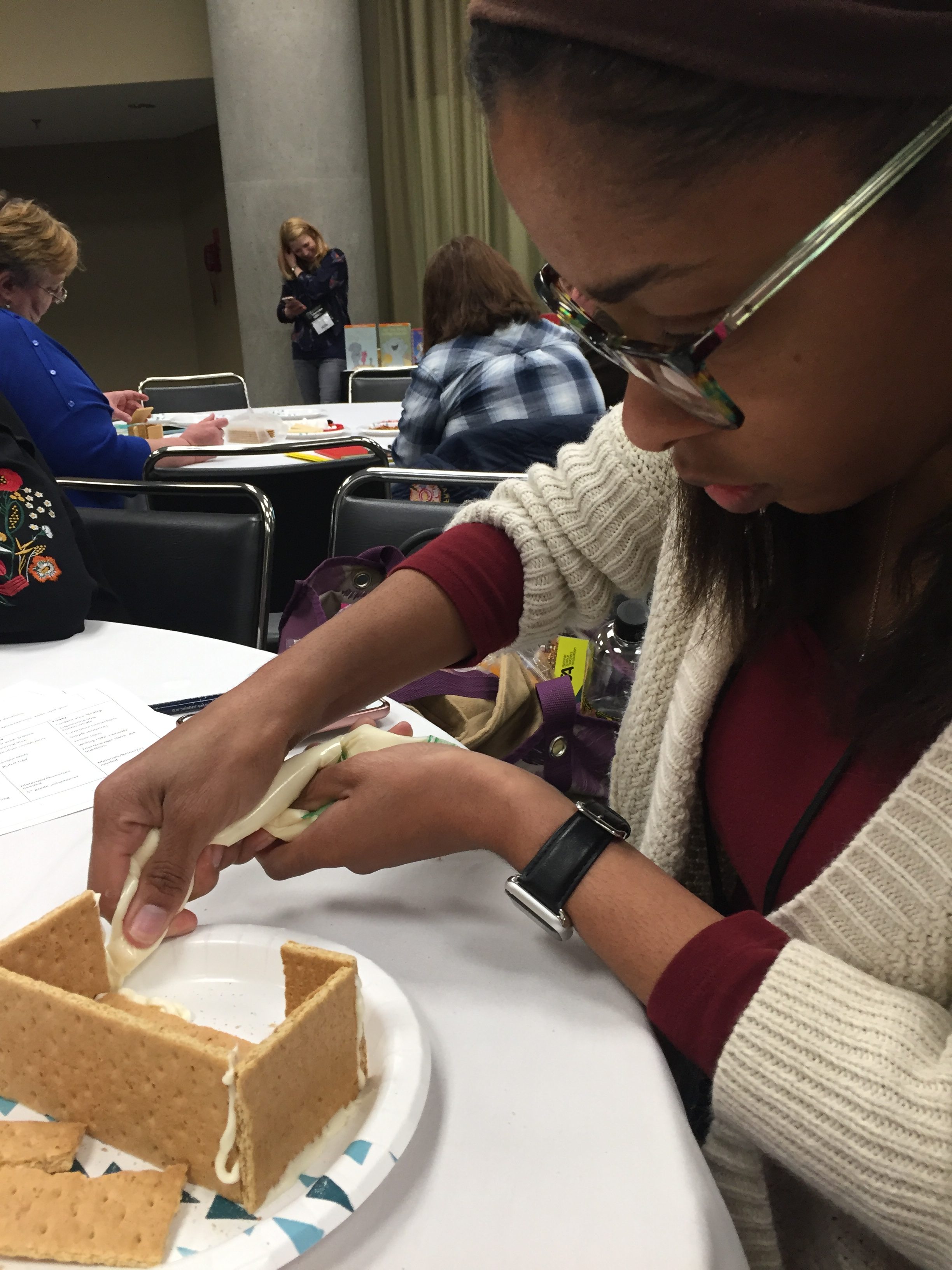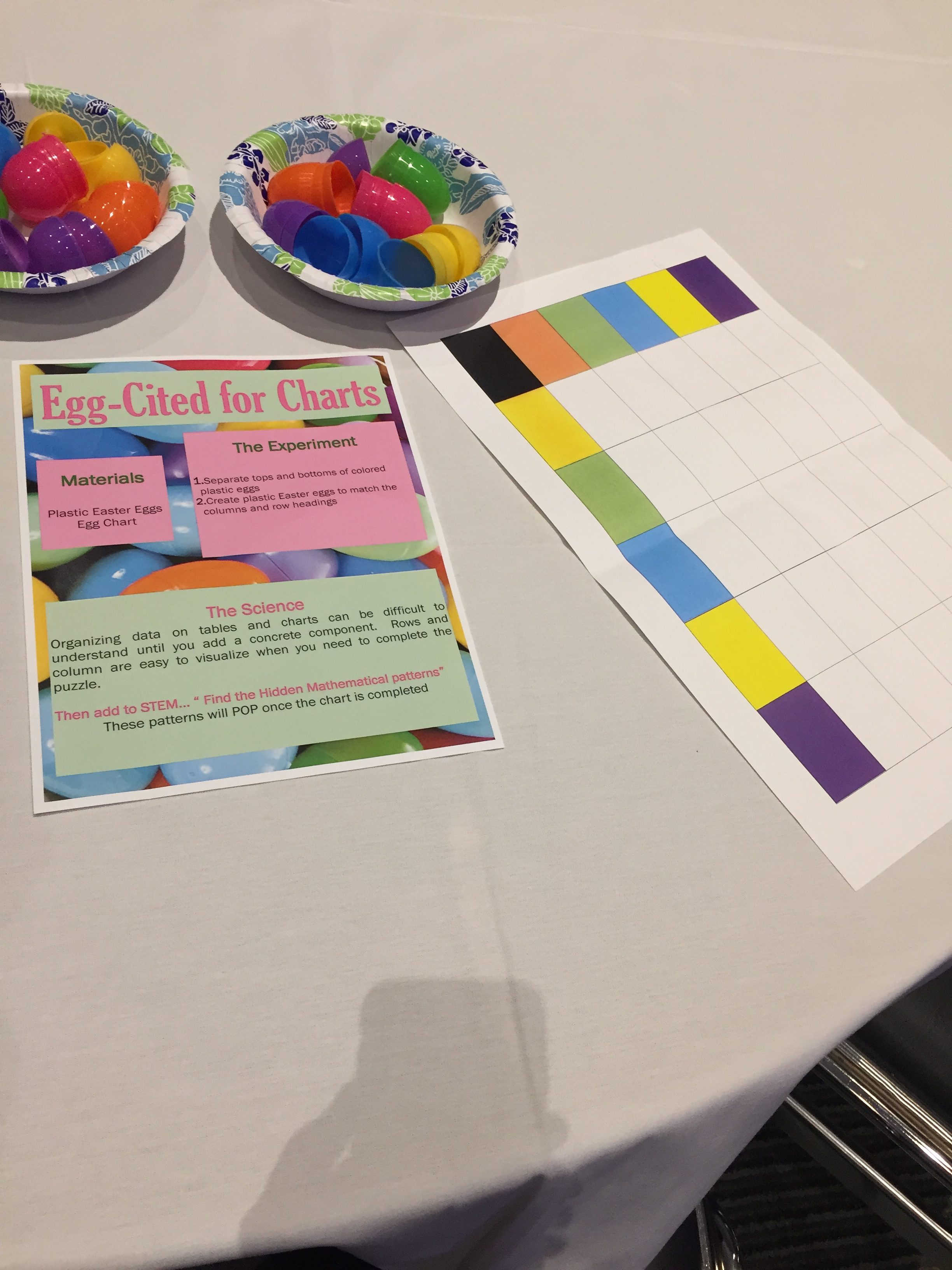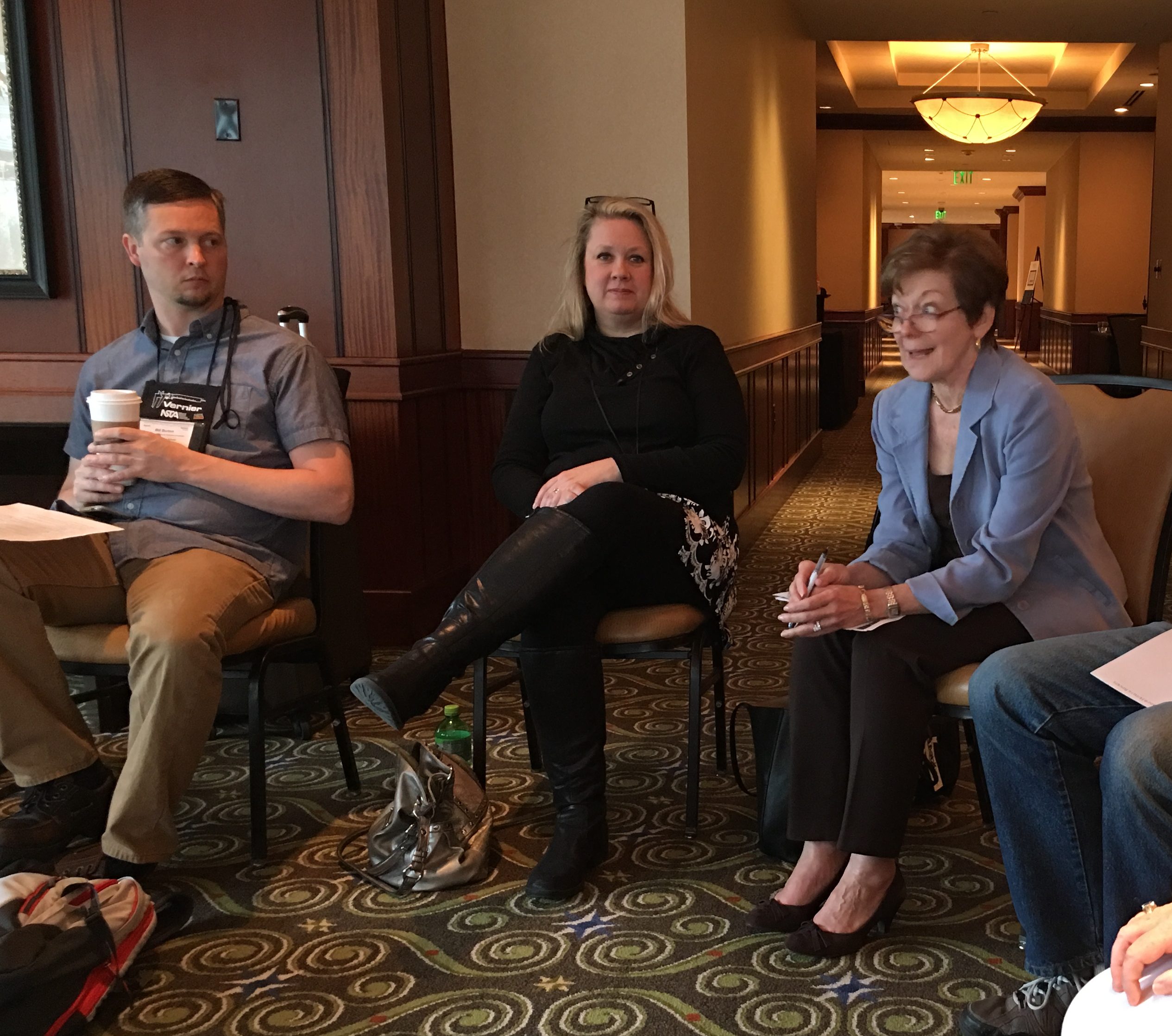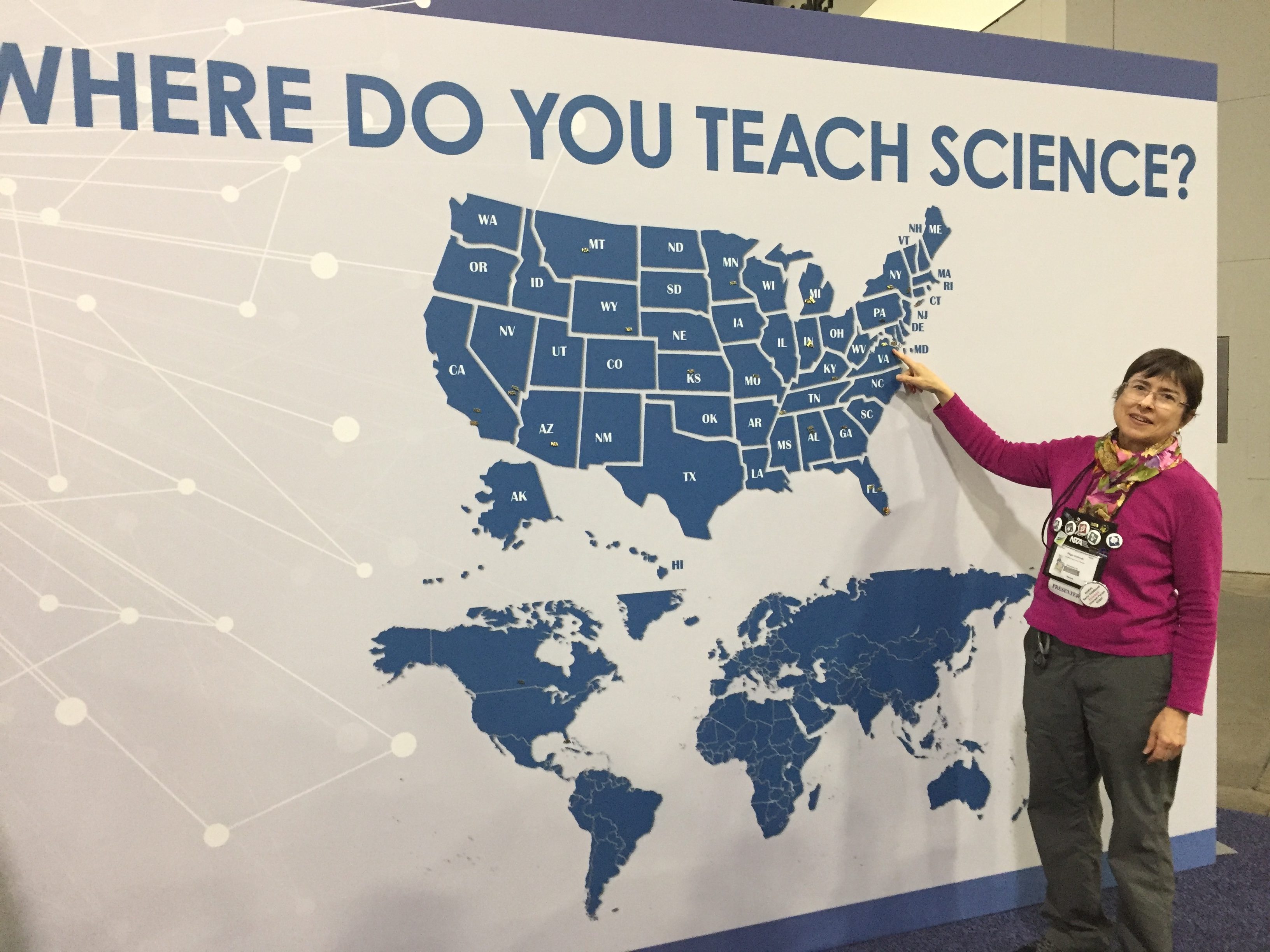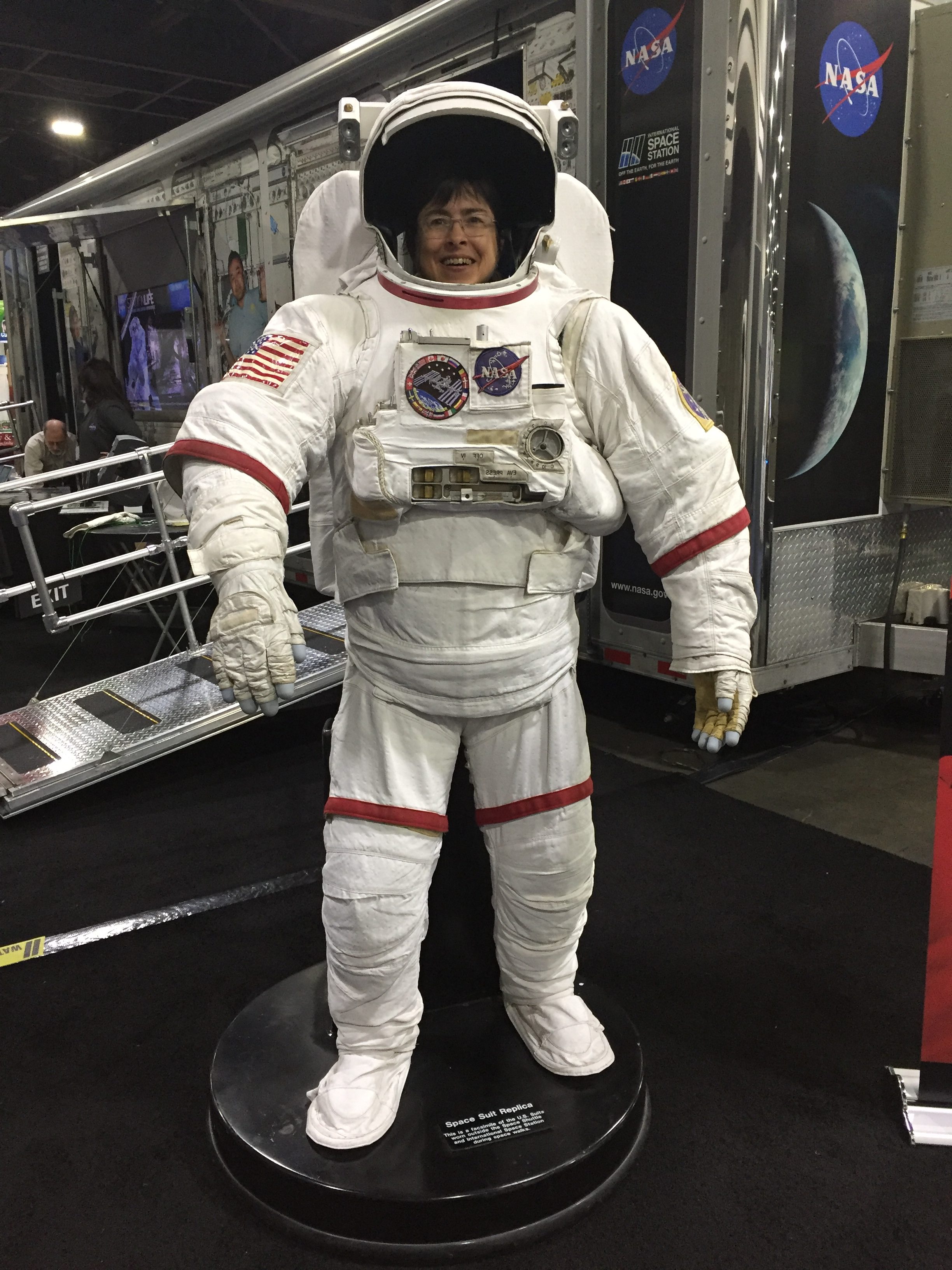See photos and get resources from NSTA 2018 Atlanta
By Peggy Ashbrook
Posted on 2018-04-01
I feel recharged and activated after attending a conference and taking a few weeks to reflect and prepare to put the new understandings into practice. Whether or not you attended the 2018 NSTA national conference you can access files uploaded by presenters. Two sources provide information about the 2018 NSTA national conference sessions and presenters: the online NSTA website conference events schedule where you may have added sessions to your personal scheduler, and the NSTA app. Note: the NSTA personal scheduler and app do not sync, so changes made in one tool do not automatically transfer to the other.
The events schedule is the place to find posted resources from the sessions and evaluate the sessions you attended. The app is the place to find contact information about presenters, upload your photographs, and rate the session. Please do the evaluating and rating to help the conference team know which sessions were most helpful.
There were many sessions and special event I wish I had time to attend—did you get to everything on your wish list? Here is my recap of some of the sessions I attended. Click on the photos to see a larger view.
Geology Rocks—Go beyond rock collecting and add geological investigations to your class! Activities aimed at preschool to grade 2, but can be adapted for all elementary classes. Resources provided.
Presenter(s): Anne Lowry (Aleph Academy: Reno, NV).
It is a knowledgeable presenter who uses her 60 minutes of session time to engage participants without using slides. Anne Lowry who teaches preschool is knowledgeable and she shared what she knows about geology and young children with us. Lowry confirmed that earth science is the heart of everything we humans do, influencing what we eat and manufacture, and a factor in our travel and constructions. Tables for three rows of seating had “provocations” to engage us in learning about landforms, become familiar with rocks and soil. This collection of materials could be used for a family science event.
- Geology Rocks! session on early childhood science learning.
- Trace a rock, turn it over and trace it again. Becoming familiar with a rock and using spatial ability.
- Stacking and balancing rocks according to the number rolled on the dice–art and math
- Stacking and balancing rocks according to the number rolled on the dice–art, spatial awareness, and math.
Tips for consideration:
- For safety she uses crumbled bits of tissue paper instead of sand to represent windblown soil and plants.
- Reflect with children on their observations. Get them to explain and discuss why by asking, “What is your theory on _______?”
- Invite someone from your state Bureau of Mines, or a jeweler to come talk and share resources.
- Children who start a rock collection often focus first on colors, shapes, and counting. Some activities can involve using spatial thinking.
Look up this session and download the handout!
Engineering for the Gingerbread Baby—Let’s help our youngest learners be engineers! Come engage in designing a structure based upon the story Gingerbread Baby by Jan Brett. Leave the session with lessons straight from kindergarten classrooms where engineering is seamlessly integrated throughout content areas.
Presenter(s): Valerie Patel (William B. Gibbs, Jr. Elementary School: Germantown, MD), Erin Del Balzo (William B. Gibbs, Jr. Elementary School: Germantown, MD), Karen Anderson (William B. Gibbs, Jr. Elementary School: Germantown, MD)
Kindergarten teachers Valerie Patel, Erin Del Balzo, and Karen Anderson said that what their students came up with in this engineering experience was amazing—not the structures they designed and built but their learning. In their presentation about the gingerbread design and construction project they used the definitions of engineering from A Framework for K-12 Science Education (NRC 2012, p. 11-12): “We use the term “engineering” in a very broad sense to mean any engagement in a systematic practice of design to achieve solutions to particular human problems. Likewise, we broadly use the term “technology” to include all types of human-made systems and processes—not in the limited sense often used in schools that equates technology with modern computational and communications devices. Technologies result when engineers apply their understanding of the natural world and of human behavior to design ways to satisfy human needs and wants.” These kindergarten teachers took their children deeply into an engineering design process by providing time over a week to work, setting constraints, involving measurement, including choices, assigning jobs for each team member, and making reflection and improving a design part of the process.
- Valerie Patel, Erin Del Balzo, and Karen Anderson from William B. Gibbs, Jr. Elementary School, Germantown, MD present Engineering for the Gingerbread Baby.
- Will the conference participants be able to wait to eat these goodies?
- Applying icing from a plastic bag with a teeny hole cut in one corner.
- Designing a “gingerbread” house.
Tips for consideration:
- Invite 5th graders to assist by asking questions to promote thinking—not to help with the building.
- Have children reflect on their structure before piling on the decorations.
- Through reflection on failures children feel successful.
- Ask, “What didn’t work?” and have children draw a plan of what they would try next.
- Use related children’s literature in discussions about alternative solutions to problems.
For more specifics, look up this session and download the slides and handout!
ASTC-Sponsored Session: STEM Starts Early “Get a Taste of PASTE”—Learn to create concrete STEM interactions with simple supplies to elevate the understanding of your students. Don’t just use the teachable moments but create them.
Presenter(s): Rachel Cahill (Lancaster Science Factory: Lancaster, PA)
Rachel Cahill, a STEM Educator at the Lancaster Science Factory in Lancaster, Pennsylvania, charmed us with her skill at communicating how to create teachable moments and her confidence in the abilities of young children to engage in science explorations and explain what they learned.
- Rachel Cahill, a STEM Educator at the Lancaster Science Factory in Lancaster, Pennsylvania shares many activities.
- Two syringes attached to each other with a clear plastic tube, filled with liquid.
- An activity to learn about making and using charts.
- A participant trying the activity to teach children about making and using charts.
Tips for consideration:
- Hot glue the clear tubing (aquarium supplies) to the syringes and be sure the amount of liquid doesn’t exceed the volume of the smallest syringe.
- Start with plastic dishes to build children’s confidence and move on to china and glassware when they have grasped how to pull the tablecloth.
- Build children’s understanding of charts and graphs by having them build one putting egg bottoms and egg tops together following the color on the chart.
How would you use these activities within an investigation?
Leveraging Partnerships to Support Urban STEM Education—Implementing successful STEM Education in an urban elementary school can be a daunting task. They are many barriers including funding, perceptions of who “can and should do STEM” and expertise. Learn how to use partnerships to overcome these barriers.
Presenter(s): Melanie Johnson (M. Agnes Jones Elementary School: Atlanta, GA), Margul Woolfolk (M. Agnes Jones Elementary School: Atlanta, GA)

Melanie Johnson and Margul Woolfolk of M. Agnes Jones Elementary School, Atlanta, GA tell how they lead their school to become the first state of Georgia STEM certified school.
It was moving to hear this administrative partnership talk about leading their school’s journey to become the first state of Georgia STEM certified school. The school’s mantra is “Powered by STEAM…Led by Students.” Through partnerships with parents, local congregations, Georgia-Pacific, the Truly Living Well Center for Natural Urban Agriculture, Georgia State University, HATponics, the Environmental Protection Agency, and the National Park Trust, the students have participated in quarterly engineering design challenges, learned various methods to grow food, and taken field trips to state parks. Read more about their journey in their newsletter.
Elementary Extravaganza—This Extravaganza is not to be missed! Join elementary groups of professionals for an exceptional opportunity. Gather resources for use in your classroom immediately. Engaging hands-on activities, strategies to excite and encourage your students, a preview of the best trade books available, information about award opportunities, contacts with elementary science organizations, sharing with colleagues, door prizes, and much more will be available to participants.
- Cindy Hoisington talks with attendees about early childhood science.
- Lisa Pike shares a fourth grade science investigation, “Bubble Babies,” with participants (Summer 2017 issue S&C).
- Peggy Ashbrook and participants discussing learning plant diversity through a plant scavenger hunt.
Because I was presenting as part of the Elementary Extravaganza I did not circulate to the many tables so I missed much! Many presenters posted resources on the NSTA 2018 Atlanta National Conference session schedule for your use. I presented about the March 2017 Early Years column on Exploring Biodiversity through a plant scavenger hunt, using photos of plants in the school yard or a nearby area. Look up this session and download the many handouts.
AMSE-Sponsored Session: Unpacking Race in a Science Classroom–How does racial identity correspond to or counter that of the content narrative that is commonly shared in our classrooms? What are the implications?
Presenter(s): Deb Morrison (University of Washington: Seattle, WA), Jason Foster (Niles West High School: Skokie, IL), Michael Nocella (Niles West High School: Skokie, IL)
Questions “How does racial identity correspond to or counter that of the content narrative that is commonly shared in our classrooms?” and “What are the implications?” were raised at the AMSE-Sponsored Session: Unpacking Race in a Science Classroom. Thank you to the presenters for sharing their vision and talking about what we need to do to work across the divisions of race. Some notes I jotted down: “Every little strand in the fabric of our country is part of building the strength, excellence and beauty of our nation.”
- An AMSE-Sponsored Session, “Unpacking Race in a Science Classroom.”
- More resources for “Unpacking Race in a Science Classroom.”
Tips for consideration:
- Audio record children saying their own names to learn the correct pronunciation.
- Create an “affinity group” with other teachers in your program to discuss you ideas on critical race theory and social justice and have a core understanding of your reason to gather.
- The website they list on the conference session scheduler is a Google doc full of ways to connect, learn, share resources on race that you know about, and find others for use in your classroom.
Sing for the Planet–The path to the mind goes through the heart. Begin with 14 songs from Pete Seeger, with his Grammy-winning Fourth Graders. Look at easy lessons to support the songs. Then enjoy research on positive approaches to environmental ed.
Presenter(s): Juliana Texley (Central Michigan University: Mount Pleasant, MI)
Juliana Texley, former NSTA President and teacher made the connection between the arts and STEM: “When music is used as a vehicle for science, technology, engineering and mathematics (STEM) or social studies learning, we nurture deeper and more lasting understanding.” See and download her presentation on the online conference session schedule.
A River Story: Expanding Science Access to Urban Second Graders and Their Teachers–Find out how community partners worked with an urban district to enhance training opportunities for grade 2 teachers and support three-dimensional science learning for their ALL their students.
Presenter(s): Sarah Sterling-Laldee (Paterson Public Schools: Paterson, NJ), Nakeia Wimberly (Paterson School No. 2: Paterson, NJ), Elizabeth Nunez (Paterson Public Schools: Paterson, NJ), Norma Menchon (Paterson School No. 2: Paterson, NJ)
It often happens that an unrelated group of conference participants follow roughly the same schedule and end up in several of the same sessions. It was fun to find out that someone I had talked with in a previous session was presenting in this one!
Through partnering with a local foundation and the state Audubon Society this group of educators were able to provide training opportunities to increase teacher and student engagement with each other and with discourse. Teachers became more open to new instructional practices. There were 28 second grade teachers in the first year cohort and 28 first grade teachers in the second year cohort. In the second year the 2nd grade teachers returned as mentors for the new cohort. Teachers met twice a month, took field trips, and held family science events.
- A session on Expanding Science Access to Urban Second Graders and Their Teachers, from Paterson Public Schools, Paterson, NJ.
- Teacher from Paterson Public Schools, Paterson, NJ tells how they support access to science education in their school.
- One of the teachers from Paterson Public Schools, Paterson, NJ continues the story of how they increased science professional development.
Tips for consideration:
- Teachers were required to apply as a school team so they had support in their building.
- They have an initial meet-and-greet, and an ending celebration with both cohorts.
- They held a reception with administrators at the school and district levels.
STEM and the Urban Elementary Classroom–An urban elementary school STEM teacher discusses using three-dimensional STEM instruction as a vehicle for building critical thinking skills and positive impact on student learning.
Presenter(s): Natalie Rachel (Fulton County Schools: Atlanta, GA)

STEM teacher Natalie Rachel of Fulton County Schools, Atlanta, GA talks about how she engages the school’s K-5 students in science through an inquiry-based NGSS strategy.
Every week, for 45 minutes for each class, STEM teacher Natalie Rachel engages the school’s K-5 students in science through an inquiry-based NGSS strategy. Their work may take place over several weeks. She plans and works together with the classroom teachers to create a professional learning community so the instruction can be extended in the regular classroom. Look up this session to see the slides to learn more about how literature, gardening, technology, and after school programs are incorporated in her work.
The Early Childhood Science Interest Forum (ECSIF) of the National Association for the Education of Young Children (NAEYC) held an informal meeting to share resources, get to know other early childhood educators, make plans to support ECE sessions at NSTA conferences, and present the Golden Hand Lens Award to Linda Froschauer.
- Discussion about how best to support science education in early childhood settings at a NAEYC ECSIF meeting.
- Lots of talk and lots of support for teaching science in early childhood settings.
- EC science education is serious…and fun.
- Linda Froschauer receives the “Golden Hand Lens” award from the NAEYC ECSIF.
Learn more about the ECSIF on the NAEYC Hello site and on Facebook.
Science and Language: Natural Partners–Science is a natural vehicle for supporting language development for all children. A brief hands-on exploration and video will be used to promote discussion about approaches and strategies that support language development while keeping the focus on children’s science experiences, observations, and ideas.
Presenter(s): Cindy Hoisington (Education Development Center, Inc.: Waltham, MA)
In previous years sessions by Cindy Hoisington have been worthwhile, because she has extensive experience in early childhood education and really digs into the ideas. But another session was also important to me so I am grateful that Cindy posted her slides. See and download her presentation on the online conference session schedule.
Tips for consideration:
She prompts us to remember to…
- Focus your questions on children’s experiences, observations, and ideas
- Provide all children with opportunities to contribute.
- Encourage children to talk to one another.
- Use exploration materials, photos, children’s representations, and books as props
- Wrap-up before children lose interest.
Starting STEM at an Early Age–STEM starts at an early age. Join us on how to engage early learners in an NGSS early childhood curriculum.
Presenter(s): Kendra McKoy (Liberty Science Center: Jersey City, NJ)

Kendra McKoy shares children’s literature and activities to consider using as part of ongoing science and engineering design inquiries.
This Liberty Science Center session shared many activities to consider using as part of ongoing science and engineering design inquiries. Kendra emphasized the effectiveness of introducing vocabulary, such as, “transparent,” “translucent,” and “opaque,” after children have first-hand experiences when they need the words to describe their

Participants in the Liberty Science Center session exploring how light travels through different materials.
observations. Starting with a drawing of their design and saying what materials they need helps children be creative. Kendra also emphasized the importance of including time for children to re-design their boats or other work, and test their new designs. In one of the activities we built model sailboats and tested them on “a solid” (a table representing land) but at the center children also test their boats on “a liquid,” a tub of water.
Supporting Early STEM Inquiry Through Learning Partnerships–Supported by 100kin10—the District of Columbia Office of the State Superintendent of Education (OSSE), DC Public Schools (DCPS), and the National Air and Space Museum (NASM) have partnered to improve active STEM learning in the early grades by providing rich professional development for teachers and connecting young learners to STEM in their community. We will share the program’s progress and will lead participants through a hands-on inquiry STEM experience focused on preK learners.
Presenter(s): Lauren Allen (D.C. Office of the State Superintendent of Education: Washington, DC), Sarah Massie (Plummer Elementary School: Washington, DC)
- Time to discuss the ideas is a great benefit of attending conferences.
- Exploring the properties of water using drops of water.
- STEM Integration under discussion.
- Having administration support is key in this STEM Partnership.
- Lauren Allen, STEM Mgmt Analyst for OSSE, Gov’t of DC, discusses teaching coding in early childhood.
Another session that shows how having strong administrative support of teachers builds good outcomes for children. The admin-ECE pair, Lauren Allen and Sarah Massie, told us how a partnership among institutions brought professional development to early childhood teachers of 3 and 4 year olds. [Full disclosure, as a contractor I provide some of the professional development.] And then we got to try out some of the open explorations! Supported by 100kin10—the District of Columbia Office of the State Superintendent of Education (OSSE), DC Public Schools (DCPS), and the National Air and Space Museum (NASM) involve classroom teachers in a program that has continued from its beginnings as the NASM’s “Science in PreK” program. Opportunities for teacher growth as STEM educators include writing for the NSTA Early Years blog, presenting about the specific science and engineering inquiries that take place in their classrooms, and supporting family science events at the NASM. See resources from this partnership at: https://padlet.com/semassie0/hrq548wcfnvq
NSTA Press® Session: Bringing the S-T-E-M Together in Early Childhood Using Science and Engineering Practices–Increase your understanding of science and engineering practices while seeing how young children use them in STEM explorations. Discuss examples and NSTA’s early childhood position statement.
Presenter(s): Peggy Ashbrook (Author/NSTA Early Years Columnist: Alexandria, VA)
- Which of the 8 science and engineering practices do you see the child using?
- Looking for examples of children using science and engineering practices in photos of children at work.
- Each photo of children at work/play may reveal more than one of the practices being used.
Identifying the NGSS science and engineering practices being used by children as they engage in explorations helps educators who are new to the 3-dimensional teaching and learning with a way to begin implementing this structure, although much of early childhood education has always been multi-dimensional. Reading A Framework for K-12 Science Education: Practices, Crosscutting Concepts, and Core Ideas, especially pages 29-34, “Chapter 2 Guiding Assumptions and Organization of the Framework,” is a good introduction. In this session I briefly talked about the foundational research for the Next Generation Science Standards and showed an example of how all the science and engineering practices are used by children during a science inquiry about earthworms. Then participants looked at additional photos of children at work and discussed which of the practices they could identify in use. I appreciate the contributions to the discussion of how to move from single unrelated activities to full inquiry using the practices integrating science, engineering, and math, and using technology. Look up this session to see the slides.
The Benefits of Applying Spatial Learning within a STEM Classroom–Spatial ability is an important aspect of STEM education. Join in to engage in different spatial activities to promote awareness of spatial learning in the classroom.
Presenter(s): Steve Pauls (Fresno Pacific University: Fresno, CA)
Presenter Steve Pauls said he tries to be the bridge between research and the classroom. In a wide ranging discussion he noted the correlation between use of early spatial language and math ability related to parents’ spatial language and interactions, reported on research by Dr. Nora Newcombe, Dr. Jean Piaget, Dr. Susan Levine, and and Dr. Jonathan Wai, and recommended books including Spatial Reasoning in the Early Years by Brent Davis and the Spatial Reasoning Study Group.
- Presenter Steve Pauls refers to science careers that involve spatial ability.
- Spatial abilities begin to develop at a very early age.
- Can’t talk about spatial learning without gestures!
Tips for consideration—Steve noted that:
- Spatial ability develops at an early age.
- Spatial ability is not fixed, it is malleable.
- Children and adults do learn spatial thinking (see work by Sorby, Metz, and Ribe).
- A little bit of spatial training can have a long lasting, durable effect.
- Spatial learning is transferable to other areas, including STEM.
Primary Grade Engineers: Integrating STEM and Literacy in K–2 Classrooms–Learn about methods, activities, and resources to engage primary grade students in engineering while meaningfully integrating reading, vocabulary, writing, and digital literacy.
Presenter(s): Patricia Bricker (Western Carolina University: Cullowhee, NC), Melissa Faetz (Western Carolina University: Cullowhee, NC), Delaney Smith (Hayesville Elementary School: Hayesville, NC), Kimberly Sanders (South Macon Elementary School: Franklin, NC)
I wasn’t able to attend this session but the presenters posted extensive resources on the conference session schedule site (thank you!), including engineering design challenges posed by the teachers and one related to a real-life problem at their school. Look up this session to access the resources.
In the conference Exhibit Hall I picked up a cloud chart from NOAA, a bird feeder and other free materials from the Cornell Lab of Ornithology , took a photo in the suit I wore on my last mission in space, and restocked my pen supply (and chocolates) from the many vendors. Did you add a pin to the map at the NSTA Booth to show where you teach science?
- The NSTA booth had pins to mark your locality on the map.
- Imaginative play is good for all ages.
Get ready for the 2019 national conference in St. Louis, April 11-14 by submitting your proposal by April 16th of this year!
Disclaimer: The views expressed in this blog post are those of the author(s) and do not necessarily reflect the official position of the National Science Teaching Association (NSTA).









